|

HOME |
ABOUT | INDEX |
NEWS |
FACEBOOK |
CONTACT
RAINBOW
Red |
Orange | Yellow | Green | Blue | Purple
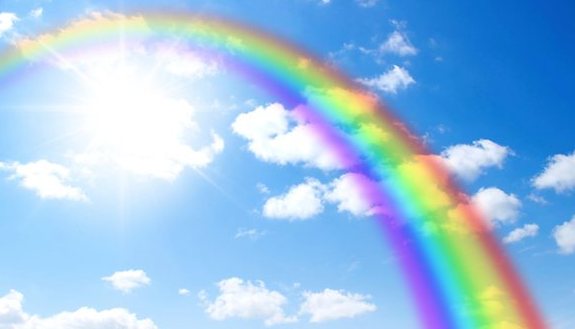
Somewhere Over the Rainbow by Judy Garland
LGBTQ Flags and Symbols
Colorful History of the Rainbow Flag
Train Passengers Sing Somewhere Over the Rainbow
Riding the Rainbow Bike Path
True Colors by Cyndi
Lauper

The Magic of Rainbows
"I see your true colors shining through. I see your true
colors, and that's why I love you. So don't be afraid to
let them show. Your true colors. Your true colors are
beautiful like a rainbow."
-Cyndi Lauper
“Life is about using the whole box of crayons.”
-RuPaul
“Be uniquely you. Stand out. Shine. Be colorful. The
world needs your prismatic soul!”
-Amy Leigh Mercree
"You'll never find a rainbow if
you're looking down."
-Charlie Chaplin
Certainly any variety of cultural, literary, and
societal meanings associated with rainbows pre-date its
current use as an emblem of the LGBTQ movement. In
modern times, rainbows are popularly regarded as a major
symbol of pride in the LGBTQ community. Rainbows are in
prominent display at LGBTQ pride parades and other
events, demonstrations, and celebrations. Rainbows are
emblazoned on flags, stickers, banners, buttons,
ribbons, clothing, hats, and shoes. These days, it is
difficult to see rainbow decor and not immediately
identify it with LGBTQ subject matter.
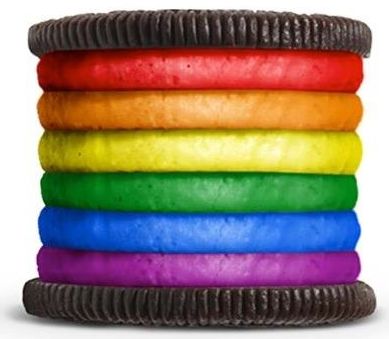
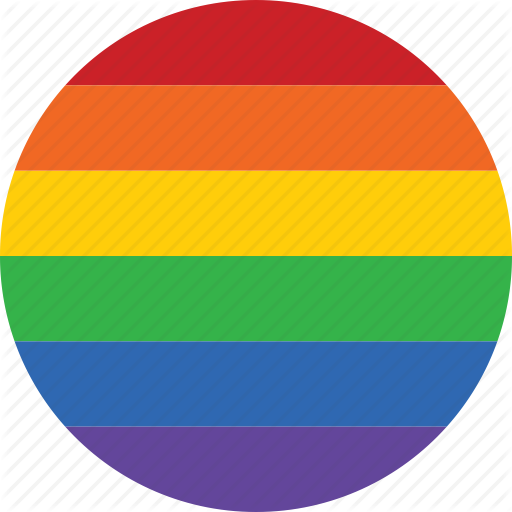 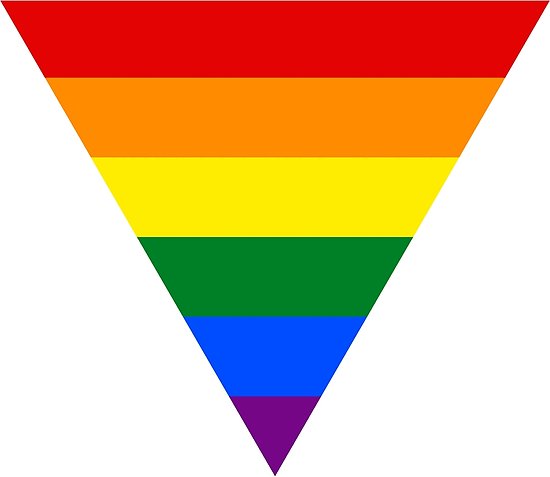 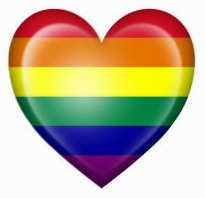
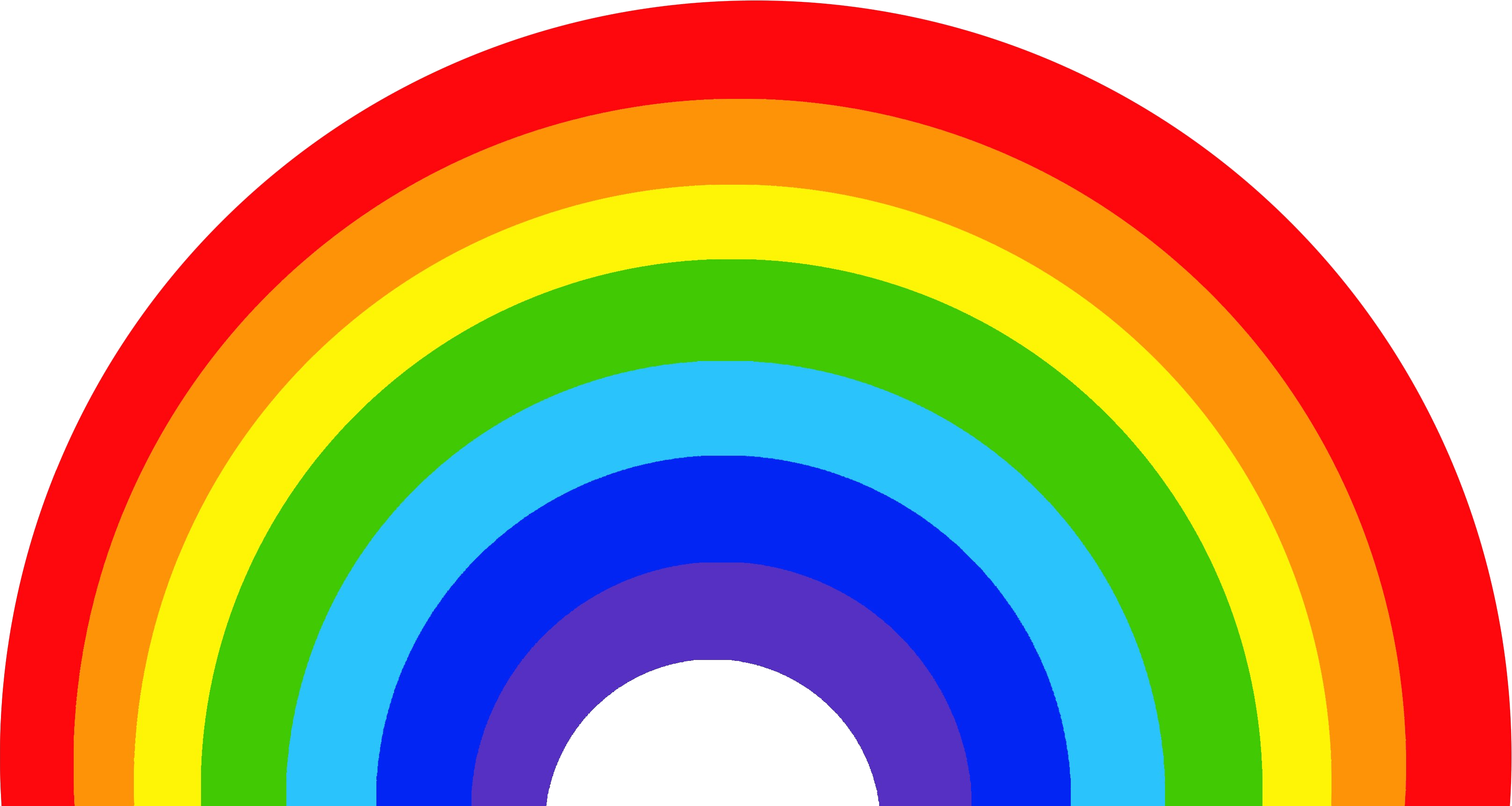
The legends and folklore surrounding rainbows offer
creative stimulus to adopt them as an appropriate icon
for the LGBTQ movement. Rainbows, with their stripes of
color, spectrum of hues, startling beauty, natural
splendor, celestial mystery, and aura of magic, easily
resonate with the LGBTQ aesthetic and philosophy.
Rainbows, after all, are dreamlike, astonishing,
peculiar, and fabulous, just like LGBTQ people. Once the
LGBTQ community embraced the rainbow as its official
insignia, it soon inspired a sense of hope and stirred
up feelings of pride.
Citing an array of historical
and mythological examples, the
LGBTQ movement selected rainbows
as its brand. As a symbol of
diversity, artistry, beauty,
flamboyance, glamour,
creativity, energy, harmony,
peace, hope, promise,
protection, rebirth, and
redemption, rainbows offer great
allure as the masthead to
represent a variety of LGBTQ
causes, issues, and concerns.
Kristin Key: Painting Over
Rainbows
Curious Facts About Rainbows
Colorful History of the Rainbow Flag
Chasing Rainbows by Big Freedia and Kesha
Interesting Facts About Rainbows
Painting a
Rainbow Crosswalk
The Rainbow Flag:
A Borderless Design
Train Passengers Sing Somewhere Over the Rainbow
Rainbow Song for Kids
Info: LGBTQ Flags and Symbols
Things You Didn't Know About Rainbows
Chris Colfer: Somewhere Over the Rainbow
History and Meaning of the Rainbow Flag
Willie Nelson: Rainbow Connection
Rainbows
in Nature
A rainbow
is a meteorological phenomenon that is caused by
reflection, refraction and dispersion of light in water
droplets resulting in a spectrum of light appearing in
the sky. It takes the form of a multicolored circular
arc. Rainbows caused by sunlight always appear in the
section of sky directly opposite the sun.
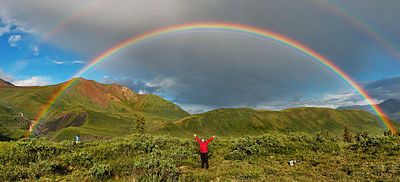
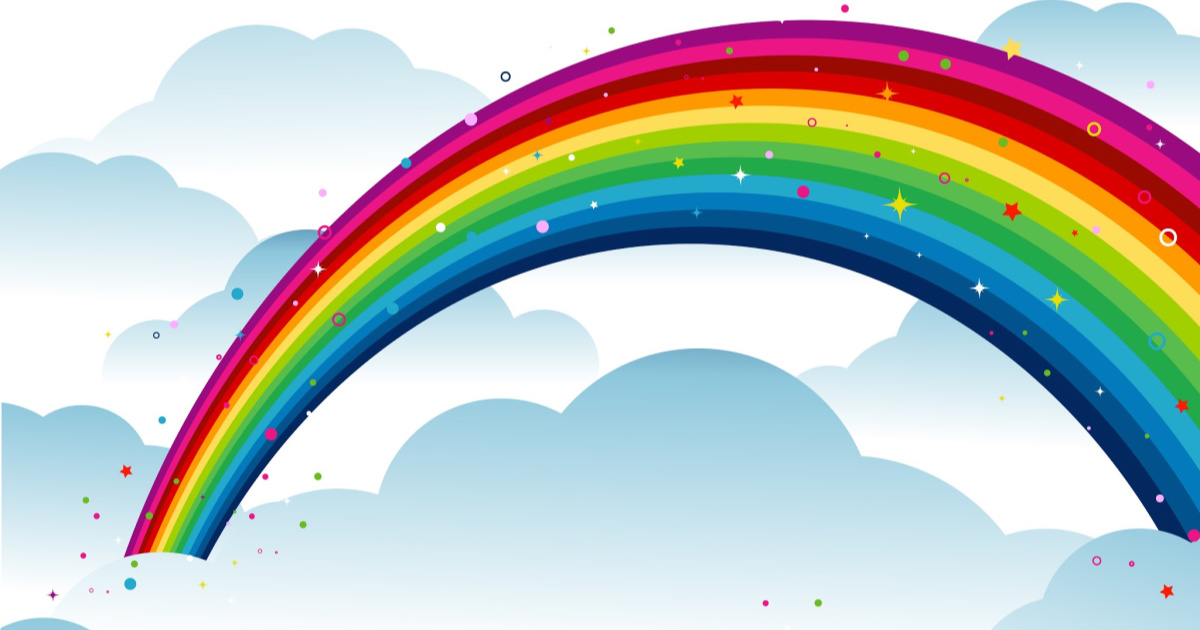
Rainbows can be full circles. However, the observer
normally sees only an arc formed by illuminated droplets
above the ground, and centered on a line from the sun to
the observer's eye.
The arc of the rainbow shows red on the outer part and
violet on the inner side. This rainbow is caused by
light being refracted when entering a droplet of water,
then reflected inside on the back of the droplet and
refracted again when leaving it. Rainbows can be caused
by many forms of airborne water. These include not only
rain, but also mist, spray, and airborne dew.
Rainbows
Explained
Kristin Key: Painting Over Rainbows
Riding the Rainbow Bike Path
Discover: Things You Didn't Know About Rainbows
Rainbowland by Miley Cyrus and Dolly
Parton
Huff Post: History and Meaning of the Rainbow Flag
Train Passengers Sing Somewhere Over the
Rainbow
National Geographic: Rainbow Information
Science of Rainbows
Somewhere Over the Rainbow by Judy Garland


Rainbows
span a continuous spectrum of colors. For colors seen by
the human eye, the most commonly cited and remembered
sequence is Sir Isaac Newton's sevenfold red, orange,
yellow, green, blue, indigo and violet. Many people
remember the colors by using the popular mnemonic
ROYGBIV.
“Nature always wears the colors of the spirit.”
-Ralph Waldo Emerson
“Try to be a rainbow in someone’s cloud.”
-Maya Angelou
“Mere color, unspoiled by meaning, and unallied with
definite form, can speak to the soul in a thousand
different ways”.
-Oscar Wilde
"Come on
let your colors burst. You're original, cannot be replaced. After a hurricane comes a rainbow. Like a
lightning bolt, your heart will glow. And when it's
time, you'll know.
Even brighter than the moon. It's
always been inside of you. And now it's time to let it
through."
-Katy
Perry
Rainbows
Explained
Discover: Things You Didn't Know About Rainbows
Science of Rainbows
National Geographic: Rainbow Information
Science: How Rainbows Form
Riding the Rainbow Bike Path
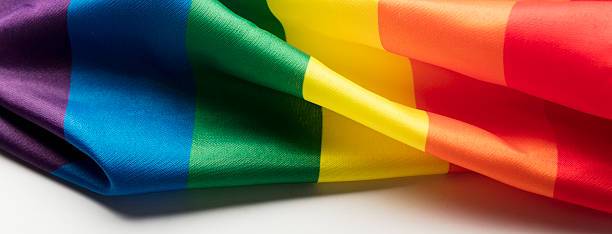
Colors of
the Rainbow
How many
distinguishable colors are present in the typical
rainbow? And what are the names of those colors?
A spectrum
obtained using a glass prism and a point source is a
continuum of wavelengths without bands. The number of
colors that the human eye is able to distinguish in a
spectrum is approximately 100. Accordingly, the
Munsell color system (a 20th-century system for
numerically describing colors, based on equal steps for
human visual perception) distinguishes 100 hues. The
apparent discreteness of main colors is a product of
human perception and the exact number of main colors is
a somewhat arbitrary choice.
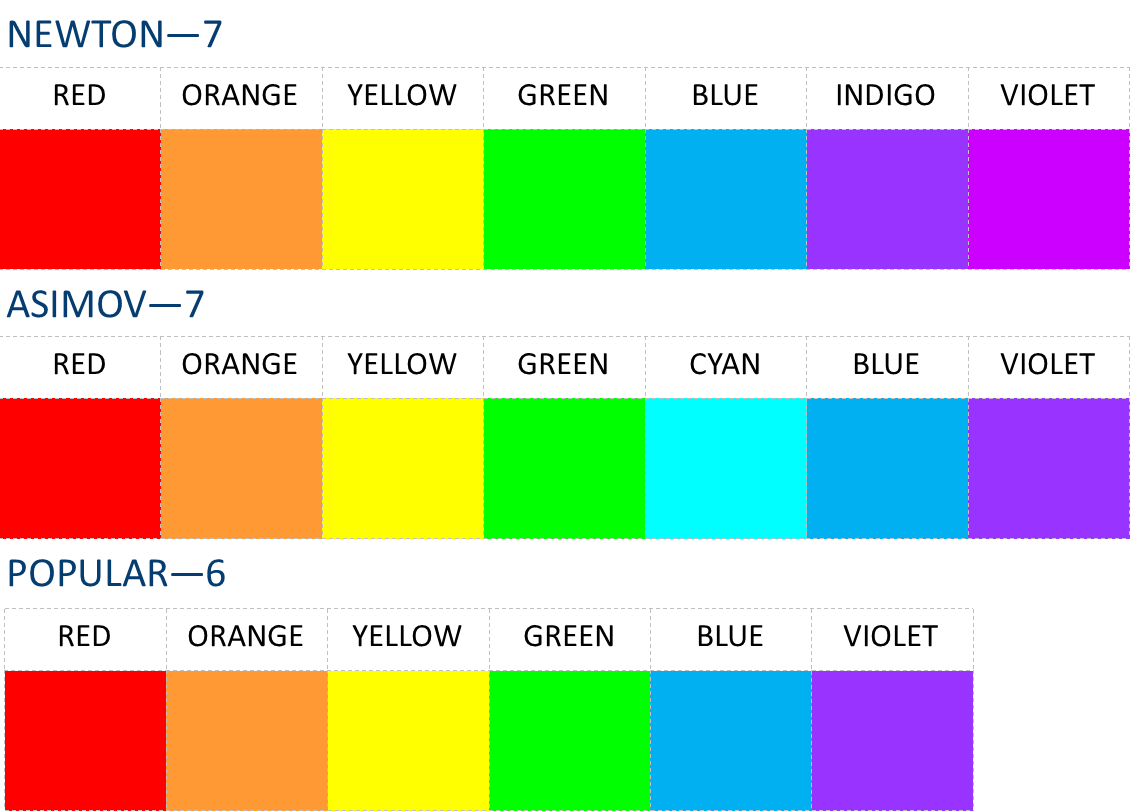
Newton,
who admitted his eyes were not very critical in
distinguishing colors, originally (1672) divided the
spectrum into five main colors: red, yellow, green, blue
and violet. Later he included orange and indigo, giving
seven main colors by analogy to the number of notes in a
musical scale. Newton chose to divide the visible
spectrum into seven colors out of a belief derived from
the beliefs of the ancient Greek sophists, who thought
there was a connection between the colors, the musical
notes, the known objects in the Solar System, and the
days of the week. Scholars have noted that what Newton
regarded at the time as "blue" would today be regarded
as cyan, and what Newton called "indigo" would today be
considered blue.
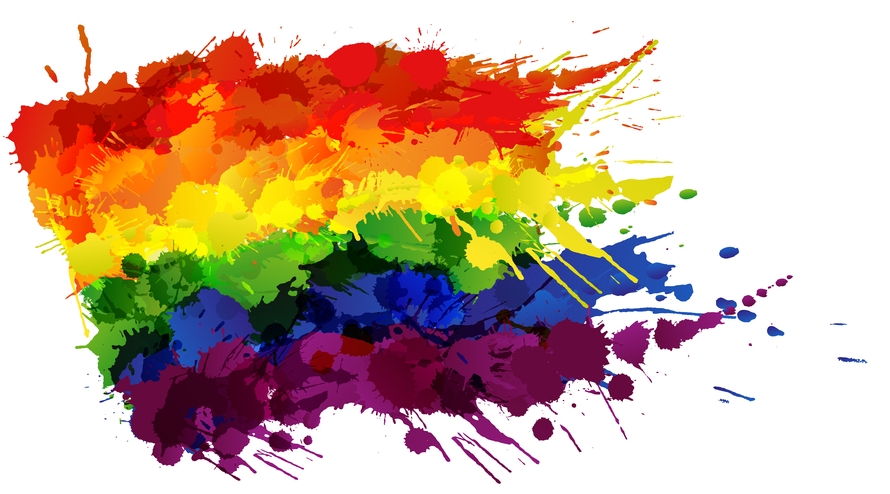
According to Isaac Asimov, "It is customary to list
indigo as a color lying between blue and violet, but it
has never seemed to me that indigo is worth the dignity
of being considered a separate color. To my eyes it
seems merely deep blue."
Red has the longest wavelength of visible light (about
650 nanometers) and usually appears on the outer part of
a rainbow's arch. Beyond visible red light is infrared.
Violet has the shortest wavelength of visible
light (about 400 nanometers) and usually appears on the
inner part of
the rainbow's arch. Beyond visible violet light is ultraviolet.
Scientists use an instrument called a spectrometer to
study these invisible parts of the rainbow.
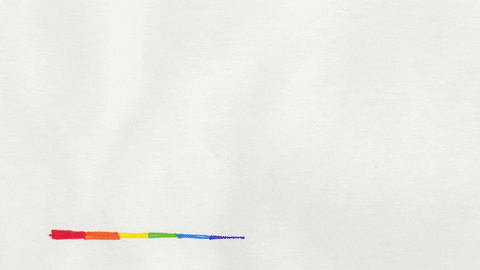
Rainbows
Explained
Kristin Key: Painting Over Rainbows
Discover: Things You Didn't Know About Rainbows
Rainbowland by Miley Cyrus and Dolly
Parton
Painting a Rainbow Crosswalk
Huff Post: History and Meaning of the Rainbow Flag
The Rainbow Flag: A Borderless Design
Chasing Rainbows by Big Freedia and Kesha
National Geographic: Rainbow Information
Train Passengers Sing Somewhere Over the Rainbow
Science of Rainbows
Info: LGBTQ Flags and Symbols
Rene Zellweger: Somewhere Over the Rainbow
Rainbows
in Myth and Legend
Somewhere
over the rainbow....
Rainbows
occur frequently in mythology, and have been used in the
arts. One of the earliest literary occurrences of a
rainbow is in the Epic of Gilgamesh, and later in the
Book of Genesis in the Old Testament Bible, as part of
the flood story, where it is a sign of God's covenant to
never destroy all life on earth with a global flood
again.
In Norse
mythology, the rainbow bridge Bifröst connects the world
of men (Midgard) and the realm of the gods (Asgard).
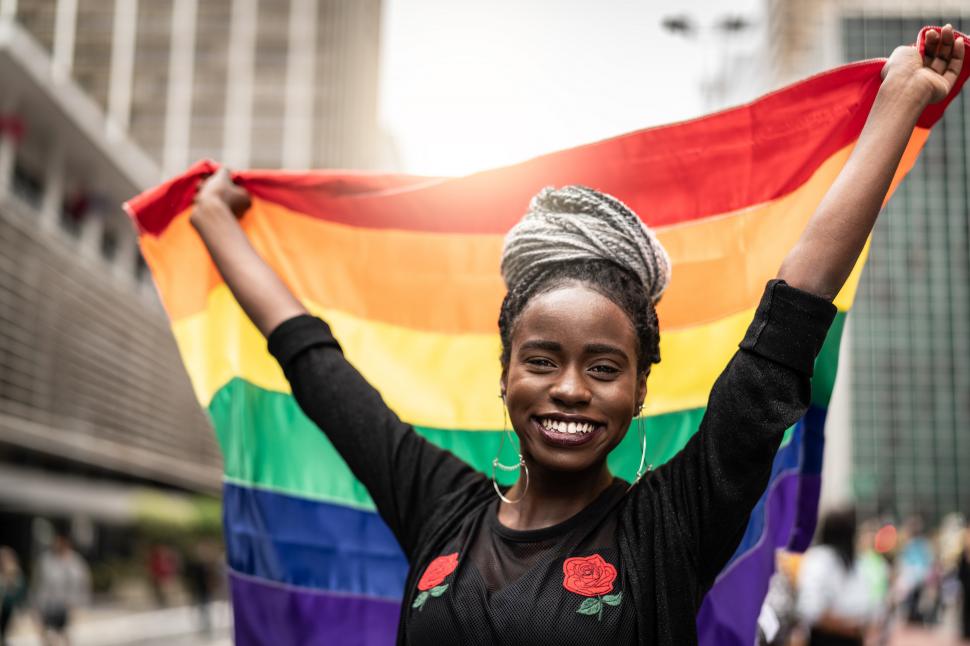
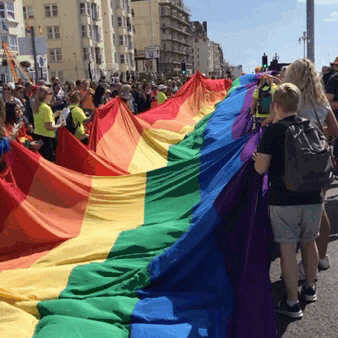
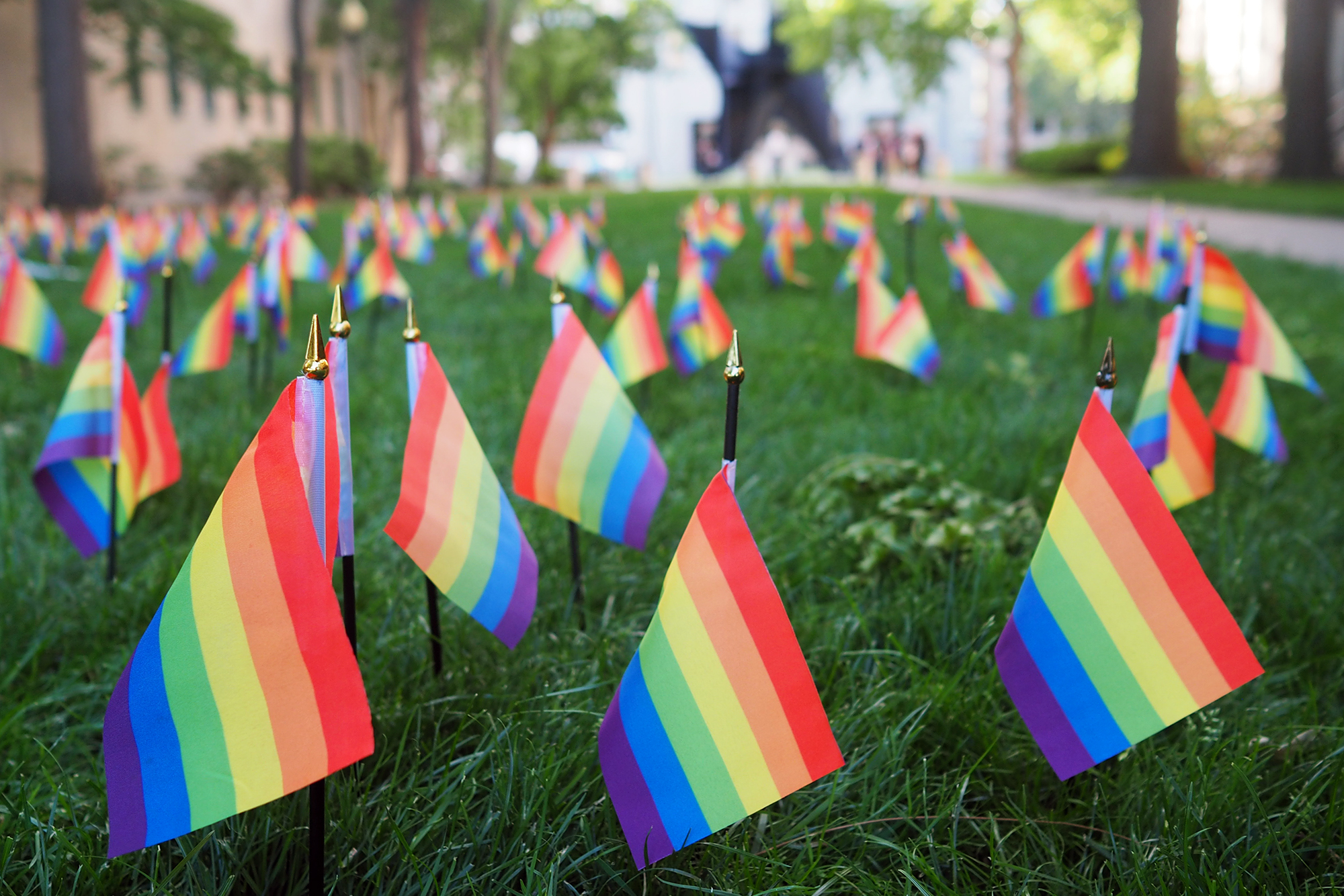
Cuchavira
was the god of the rainbow for the Muisca in present-day
Colombia and when the regular rains on the Bogotá
savanna were over, the people thanked him offering gold,
snails and small emeralds.
In the
ancient beliefs of Japan and Gabon, rainbows were the
bridges that human ancestors took to descend to the
planet.
The shape of a rainbow also resembles the bow of an
archer. Hindu culture teaches that the god Indra uses
his rainbow bow to shoot arrows of lightning.

Sometimes, however, rainbows are negative symbols. In
parts of Burma, for instance, rainbows are considered
demons that threaten children. Tribes throughout the
Amazon basin associate rainbows with disease.
The Irish
leprechaun's secret hiding place for his pot of gold is
usually said to be at the end of the rainbow. This place
is appropriately impossible to reach, because the
rainbow is an optical effect which cannot be approached.
No one ever finds the gold or the magical
leprechaun.
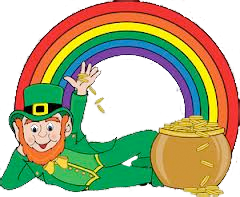
“I prefer living in color.”
-David Hockney
"Color is my day-long obsession, joy, and torment."
-Claude Monet
“If everyone would look for uniqueness in all things
then we would have a very colorful world.”
-Michael Schenker
“I found I could say things with color that I couldn’t
say any other way. Things I had no words for.”
-Georgia O’Keeffe
“I have led a pretty colorful life.”
-Corey Feldman
Kristin Key: Painting Over
Rainbows
Huff Post: History and Meaning of the Rainbow Flag
Rainbow Flag Explained
Chris Colfer: Somewhere Over the Rainbow
Gilbert Baker: Creator of the Original Rainbow Flag
Info: LGBTQ Flags and Symbols
Train Passengers Sing Somewhere Over the
Rainbow
Gilbert Baker: Meaning of the Rainbow Flag
Info: Unicorns
Riding the Rainbow Bike Path
CNN: Colorful History of the Rainbow Flag

Student
Essay: Why I No Longer Hide My
Rainbow
The summer before my
junior year, my boyfriend bought
me a rainbow bracelet at the NYC
Pride parade....
When I returned to school later
that month, the shiny piece of
plastic sticking to my wrist
felt like a burden, A small
shackle chaining me to a world
where I could no longer hide
from the sideways glances of my
peers. However, my perception of
the bracelet changed when I
began to understand the power
and history this rainbow
symbolized.
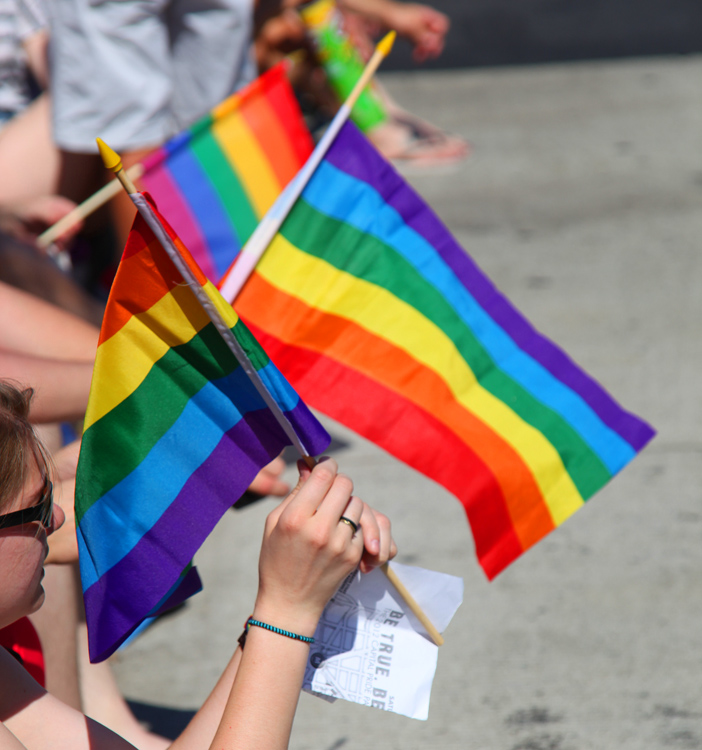
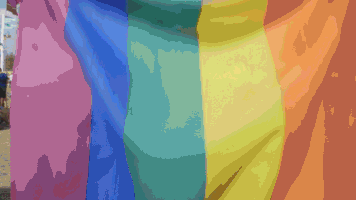
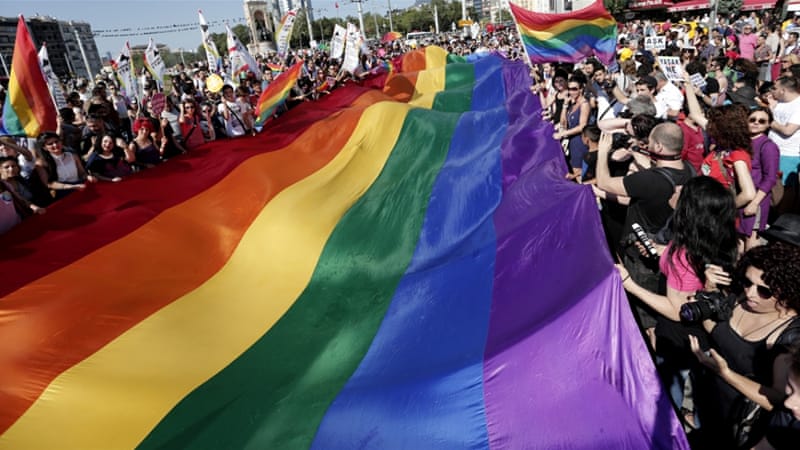
Harvey Milk, the first openly
gay elected official, once said
that “Every gay person must come
out.” He proudly declared with
Castro charisma, “You must tell
your relatives...You must tell
the people you work with. You
must tell the people in the
stores you shop in. Once they
realize that we are indeed their
children, that we are indeed
everywhere, every myth, every
lie, every innuendo will be
destroyed once and all.” Milk’s
commitment to visibility helped
pave the way for the gay rights
movement by confronting
Americans with the simple truth
that LGBTQ people are not some
fringe group, but are integral
parts to every facet of society.
Since I came out in 2015, I have
seen friends who in the past
voiced discomfort towards the
LGBTQ community have radical
changes in their views. I began
to understand that my
visibility, my bracelet, had the
power to affect real change.



For so many people, race,
gender, or religion doesn’t
allow them to flip their
visibility on and off like a
light switch. Some identity
markers are always visible and
invite judgment. So, if I choose
not to wear my bracelet because
I am worried what others will
think, I cannot confidently call
myself an ally in their fight
for nondiscrimination. It is
much easier to hide, to retreat
back into the metaphorical
closet. But now more than ever
we must be proud and visible.
Not only do I need to continue
to wear my rainbow, but I need
to shout my queerness from the
rooftops—let everyone know that
I am gay and proud because if
those who seek to silence our
voices succeed, we cannot
continue the progress we have
come to take for granted.


When I read Elie Wiesel’s quote
about the social responsibility
of our choices, I was reminded
of the reason that I decided to
come out to my boarding school
peers and to my family. Coming
out was not simply about living
a more fulfilling and authentic
life, it meant allying myself in
the struggle faced by my peers
who aren’t afforded the luxury
of hiding. It was, and continues
to be, an act of revolution—an
act of social defiance that
little by little changes the
hearts and minds of those around
us. Leaders like Harvey Milk,
Cleve Jones, and Marsha P.
Johnson chose visibility so that
they could fight for something
larger than themselves. With
gratitude for their fight and
commitment to further change, I
proudly wear my rainbow.
[Source: Charlie K, Ohio, Jan
2018]
The Rainbow Flag:
A Borderless Design
Somewhere Over the Rainbow by Judy Garland
LGBTQ Flags and Symbols
Colorful History of the Rainbow Flag
Train Passengers Sing Somewhere Over the Rainbow
Riding the Rainbow Bike Path
True Colors by Cyndi
Lauper
Rainbows
Flags and Symbols
Rainbow
flags have been used for centuries. It was a symbol of
the Cooperative Movement in the German Peasants' War in
the 16th century, of peace in Italy, and of Gay Pride
and LGBTG social movements since the 1970s. In 1994,
Archbishop Desmond Tutu and President Nelson Mandela
described newly democratic post-apartheid South Africa
as the Rainbow Nation. The rainbow has also been used in
technology product logos, including the Apple computer
logo. Many political alliances spanning multiple
political parties have called themselves a "Rainbow
Coalition."
Rainbow flags usually appear as stripes (bands) of at
least five or six different colors. Rainbow flags have
long represented groups championing diversity, respect,
and inclusiveness.
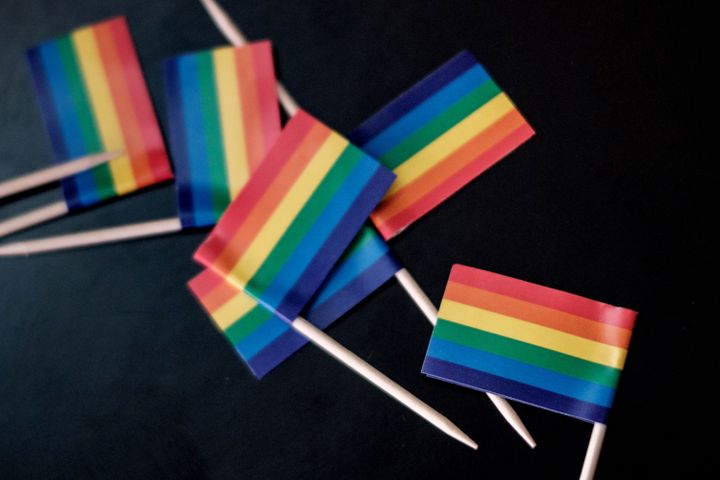
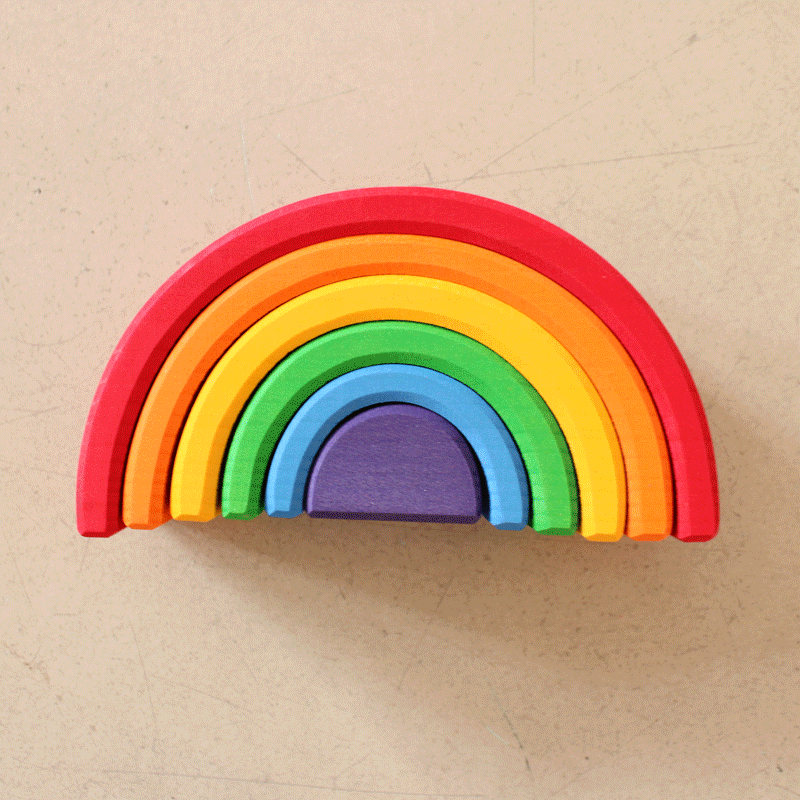
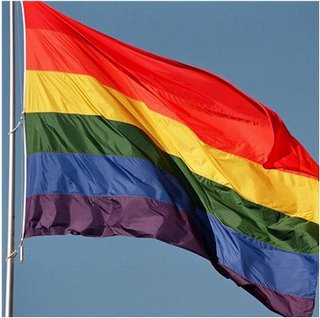
The Wiphala is a type of rainbow flag. It is a symbol of
communities indigenous to the Andes Mountains,
stretching from modern-day Ecuador to Chile. A Wiphala
has been an official flag of Bolivia since 2009, when
the nation elected its first indigenous president, Evo
Morales. The Wiphala features a diagonal patchwork
design with squares in different rainbow colors.
Different arrangements of patchwork squares represent
different Andean communities.
The Buddhist flag, designed in the 19th century, is
flown by Buddhists around the world. It is a vertical
arrangement of six bands, each representing a different
aspect of Buddhism, from kindness to moderation,
blessings to wisdom.
The Jewish Autonomous Oblast, a community on Russia's
border with China, is represented by a seven-banded
rainbow flag. The seven bands symbolize the seven
branches of a menorah.
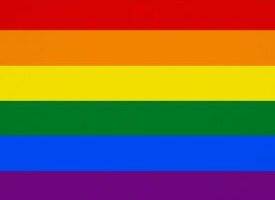
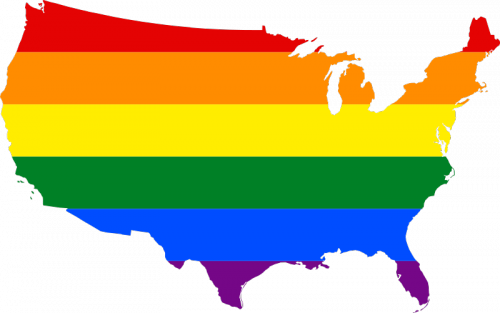
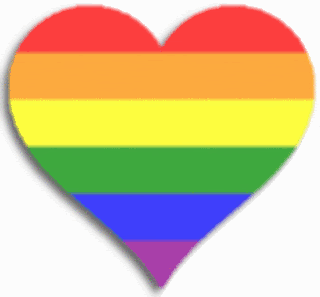
Science of Rainbows
True Colors by Cyndi
Lauper
The Rainbow Flag:
A Borderless Design
Rainbowland by Miley Cyrus and Dolly
Parton
Science: How Rainbows Form
Riding the Rainbow Bike Path
Pink Fluffy Unicorns Dancing on Rainbows
Rainbow by Kasey Musgraves
Meet the Rainbow Lady
Somewhere Over the Rainbow by Judy Garland
Painting a
Rainbow Crosswalk
Rainbow
Flag
The most
familiar rainbow flag may be the banner representing the
movement supporting civil rights for members of the
lesbian, gay, bisexual, transgender, and queer (LGBTQ)
community. The different colors of the Gay Pride flag
represent the diverse community itself, as well as
different aspects associated with each color.


The
original Gay Pride Rainbow Flag, created by Gilbert
Baker in 1978, had eight colors: pink for sex, red for
life, orange for healing, yellow for sunlight, green for
nature, turquoise for magic, indigo for harmony (peace,
serenity), and violet (purple) for spirit.
The
updated version of the Gay Pride Rainbow flag,
established in 1979, has six colors: red for life,
orange for healing, yellow for sunlight, green for
nature, blue for harmony (peace), and violet (purple)
for spirit.
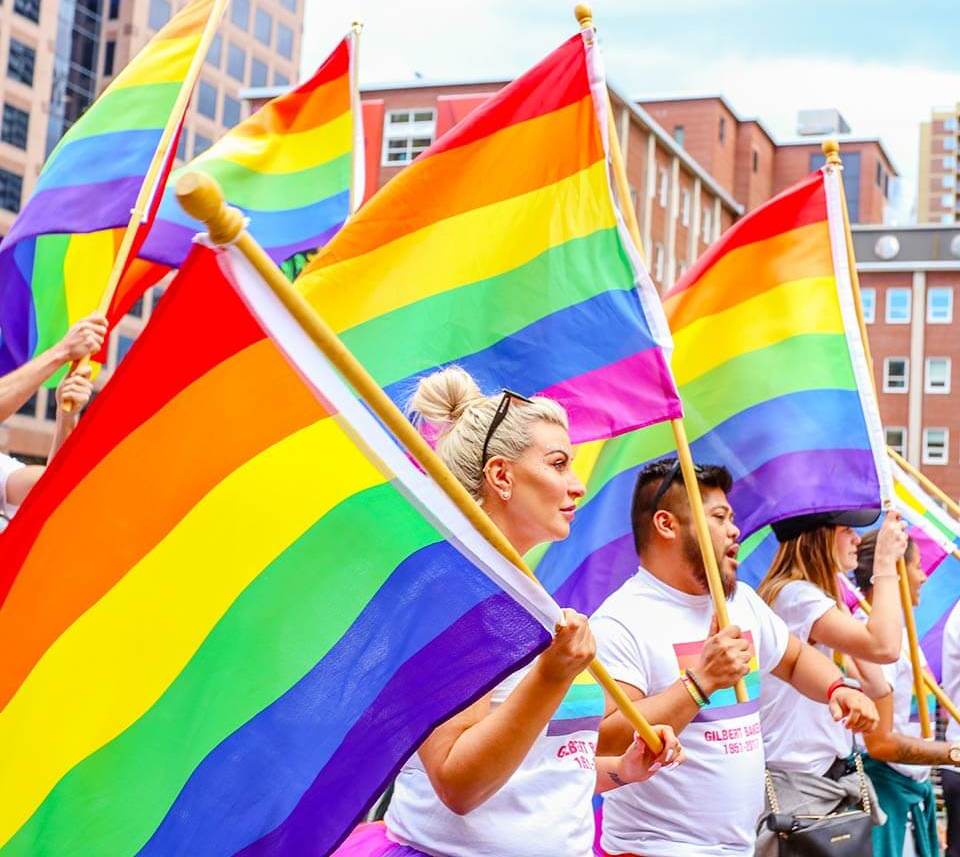
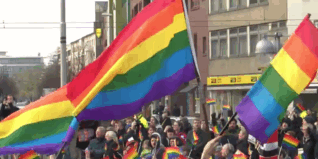
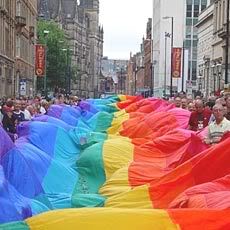
The Rainbow Flag: A Borderless Design
Huff Post: History and Meaning of the Rainbow Flag
Train Passengers Sing Somewhere Over the
Rainbow
Sacha Coward: Explains Rainbow Flag in 60 Seconds
Rainbow Flag Explained
Gilbert Baker: Creator of the Original Rainbow Flag
Rene Zellweger: Somewhere Over the Rainbow
Info: LGBTQ Flags and Symbols
Gilbert Baker: Meaning of the Rainbow Flag
Info: Unicorns
CNN: Colorful History of the Rainbow Flag
This is Not a Rainbow
Somewhere Over the Rainbow by Israel Kamakawiwo'ole
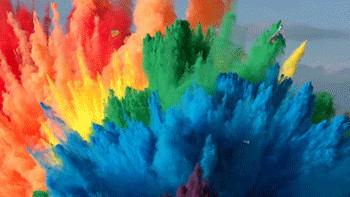
Color and Light
The world is full of light. Visible light is made of
seven wavelength groups. These are the colors you see in
a rainbow: red, orange, yellow, green, blue, indigo, and
violet. Within the visible light of the electromagnetic
spectrum are still more wavelengths. Each wavelength is
perceived by our eyes as a different color.
The reddish colors are the long wavelengths. The
greenish colors are the mid-size wavelengths. The bluish
colors are the short wavelengths.
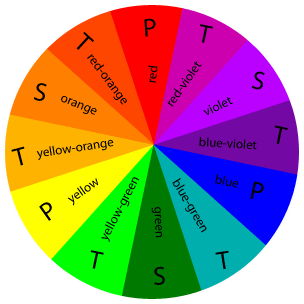
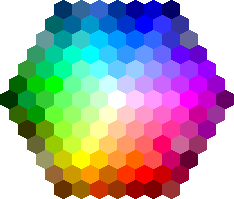
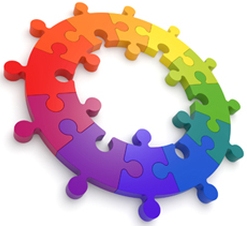
Red, orange, and yellow are warm colors, while violet
and blue are cool colors. Green is said to be the most
neutral color.
Primary Colors: Red, yellow and blue. In traditional
color theory (used in paint and pigments), primary
colors are the 3 pigment colors that cannot be mixed or
formed by any combination of other colors. All other
colors are derived from these 3 hues.
Secondary Colors: Green, orange and purple. These are
the colors formed by mixing the primary colors.
Orange = red + yellow
Green = blue + yellow
Purple = blue + red
Tertiary Colors: Yellow-orange, red-orange, red-purple,
blue-purple, blue-green & yellow-green. These are the
colors formed by mixing a primary and a secondary color.
That's why the hue is a two-word name, such as
blue-green, red-violet, and yellow-orange.
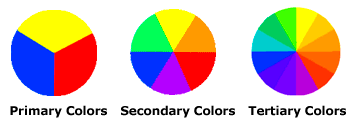
Black is the absence of color. White is the blending of
all colors.
According to some studies, there are four psychological
primary colors: red, blue, yellow, and green. They
relate respectively to the body, the mind, the emotions,
and the essential balance between these three.
Red Color Explained
Orange Color Explained
Yellow Color Explained
Green Color Explained
Cyan
Color Explained
Blue Color Explained
Indigo Color Explained
Violet Color Explained

Red (Physical) – It is a powerful color. It symbolizes
physical courage, strength, warmth, energy, and also
defiance, aggression, visual impact, and strain.
Blue (Intellect) – It is a soothing color. It denotes
intelligence, communication, trust, efficiency,
serenity, duty, logic, calmness, coolness, reflection, but also
coldness, aloofness, and lack of emotion.
Yellow (Emotional) – It is a stimulating color. It
symbolizes extraversion, confidence, self-esteem,
optimism, but also fear, emotional fragility, and
depression.
Green (Balance) – It is a restful color. It denotes
harmony, balance, refreshment, universal love,
restoration, reassurance, environmental awareness,
equilibrium, and peace.
About
Color
Crazy
Facts About Colors
Facts and
Info About Color
Color Meanings
and Symbolism
Intriguing Facts About Color
Color Symbolism and Culture
100 Interesting Facts About Color
HOME
QUEER CAFE
│ LGBTQ Information Network │ Established 2017
|